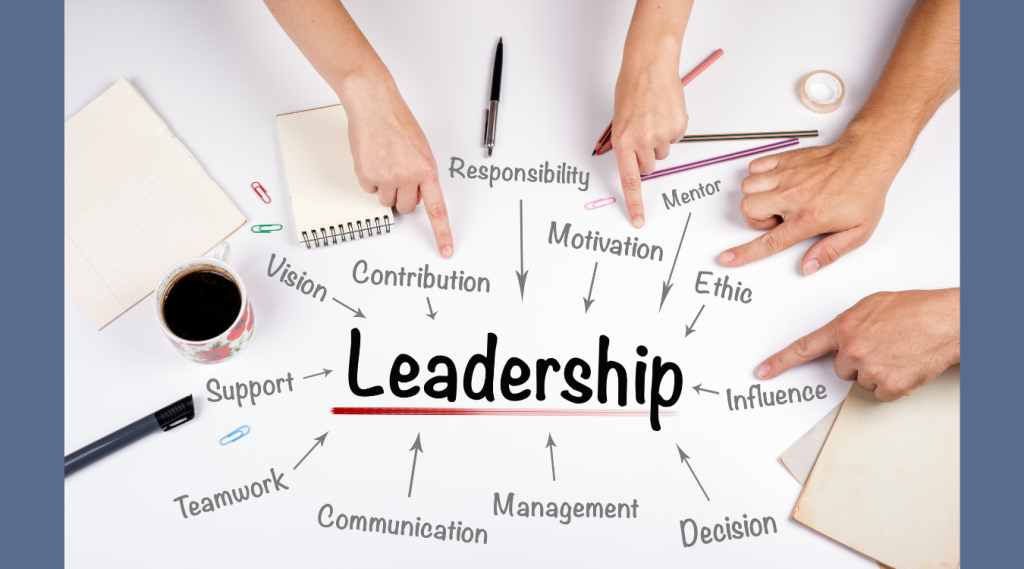Educational management and leadership involve the effective management of educational resources to achieve the goals of an organization. It encompasses the activities undertaken by educational leaders to ensure the smooth functioning of educational institutions and the provision of quality educational services to students.
This article provides an overview of educational management and leadership, highlighting its importance and the key elements that contribute to its success.
Additionally, it explores the various challenges faced by educational leaders and the strategies they can adopt to overcome them.

Understanding Effective Educational Management Strategies
Educational management and leadership are two essential components that contribute to the success of an educational institution. Effective educational management strategies play a vital role in ensuring that the organization achieves its goals and objectives successfully.
Importance Of Effective Management in Institutional Success
Effective educational management ensures that an institution operates smoothly, achieves success, and accomplishes its objectives. The following are some of the advantages of effective educational management:
- Improves the quality of education
- Encourages teamwork and collaboration among staff and students
- Promotes faculty and staff development
- Increases resource utilization and allocation
- Enhances communication and feedback loop
- Strengthens community relations
Key Competencies of An Effective Educational Manager
Educational managers need to have particular skills to manage their personnel and duties, including:
- Communication skills: Effective communication with faculty, staff, students, and parents
- Decision-making skills: Ability to make wise decisions quickly
- Leadership skills: Ability to lead and motivate others
- Organizational skills: Ability to organize resources and prioritize tasks
- Problem-solving skills: Ability to identify and solve problems
Strategic Planning and Implementation
Strategic planning and implementation are critical to achieving an educational institution’s goals and objectives. It involves setting targets, outlining steps required to achieve them, and monitoring progress against these objectives. The most critical aspects of strategic planning and implementation are:
- Identifying the institution’s strengths, weaknesses, opportunities, and threats (swot analysis)
- Establishing long-term objectives
- Developing short-term operational plans
- Ensuring the effective implementation of plans
- Creating a loop of feedback and learning from experience
Staff And Faculty Management
Effective staff, faculty, and team management are essential for an educational institution to excel. It involves creating a conducive working environment and understanding the needs of the staff. The most critical considerations for effective staff and faculty management include:
- Ensuring proper communication channels
- Creating a positive work culture and environment
- Offering staff development programs
- Establishing clear job descriptions and roles
- Ensuring transparency and fairness in staff and faculty administration
Student Engagement and Motivation

Student engagement and motivation are essential for achieving the institution’s goals and objectives. A motivated student is more likely to succeed and achieve better results than an unmotivated one. The following are the most critical aspects of student engagement and motivation:
- Involvement of students in decisions
- Creating a conducive and interactive learning environment
- Offering extracurricular activities
- Providing opportunities for students to explore and develop interests
- Offering regular feedback and assessments
Effective educational management and leadership are critical to the success of an educational institution. Strategic planning and implementation, staff and faculty management, and student engagement and motivation are vital components of effective educational management strategies.
Leadership Strategies for Educational Management
Effective educational management and leadership require dynamic leadership strategies that can help drive change and achieve goals. As an educational leader, you must be equipped with the skillset that can promote growth and development and lead change initiatives.
Here are some of the dynamic leadership strategies you should consider:
- Foster innovation: Educational institutions must encourage innovation by providing a supportive environment that fosters creativity and critical thinking among staff and students. A dynamic leader should create opportunities for their staff to collaborate and experiment with new ideas.
- Empowerment: Empowering staff and students can increase their involvement and engagement in achieving goals. Leaders should provide training, resources, and opportunities for staff to develop their skills and take on leadership roles.
- Encourage open communication: Effective communication is vital in educational management and leadership. A dynamic leader must encourage open dialogue among different stakeholders, including staff, students, parents, and the community, by providing regular communication channels and responding promptly to concerns.
Importance Of Leadership in Driving Change and Achieving Goals
Leadership is the cornerstone of successful educational management. Without strong leadership, it is challenging to drive change and achieve goals. Effective leadership is critical in the following areas:
- Institutional vision and mission: The vision and mission of an institution drive its goals and strategies. Leaders must be involved in the development of the vision and mission to ensure they align with the institution’s values and goals.
- Strategic planning: A strategic plan guides an institution’s decision-making and ensures that actions align with the vision and mission. Leaders must spearhead the strategic planning process to ensure that it meets the institution’s objectives and goals.
- Decision-making: Leaders should be decisive in making decisions and ensuring they are fair, transparent, and in line with the institution’s values and mission.
Aligning Goals with Institutional Vision and Mission
Educational institutions must align their goals with their vision and mission to ensure they stay focused on their objectives. A successful alignment can be achieved through the following strategies:
- Staff participation: Involving staff in the goal-setting process can lead to more buy-in and engagement. Leaders should encourage their staff to participate actively in the development of goals and strategies.
- Regular audits: Leaders must conduct regular audits to ensure that goals and objectives remain aligned with the institution’s vision and mission. This includes tracking progress and making any necessary adjustments.
Leading Change Management Initiatives
Change management is a vital component of educational management. Leaders must have the necessary skills to initiate, implement, and manage change. The following strategies can help you lead change management initiatives:
- Clear communication: Leaders must communicate effectively with stakeholders when initiating and implementing any changes, including providing clear expectations and timelines.
- Plan implementation: Change must be planned and implemented systematically. Leaders should provide adequate training, support, and resources to staff to ensure successful implementation.
Effective Communication and Collaboration Among Stakeholders
Effective communication and collaboration among stakeholders are essential in achieving educational objectives. A successful collaboration can be achieved through the following strategies:
- Provide a platform for communication: Leaders should provide regular communication channels that allow stakeholders to provide feedback, voice concerns, and suggest ideas.
- Encourage collaboration: Leaders should encourage collaboration among stakeholders to ensure that everyone is involved in decision-making, which can help build trust and accountability.
Developing Effective Leadership Skills
Effective leadership skills are critical to driving change and achieving goals in educational management. Leaders must continuously develop their skills in the following areas:
- Decision-making: Leaders must learn how to make decisions quickly and decisively while considering internal and external factors.
- Coaching: Leaders must coach and provide feedback to their staff to help them develop their skills and become effective leaders.
By implementing dynamic leadership strategies, aligning goals with the institutional vision and mission, leading change management initiatives, and developing effective leadership skills, educational institutions can achieve their objectives and improve student outcomes.
Frequently Asked Questions
What Is Educational Management and Leadership?
Educational management and leadership refer to the process of directing, controlling, and organizing school operations.
What Are the Responsibilities of Educational Leaders?
Educational leaders are responsible for setting a vision for the school, creating a positive learning environment, and supporting teachers’ professional growth.
How Does Educational Leadership Impact Student Success?
Effective educational leadership has a positive impact on student success by improving teacher morale, increasing student engagement, and promoting high academic standards.
Conclusion
Effective educational management and leadership are crucial aspects of the growth and success of educational institutions. The right combination of policies, strategies, and practices can create a positive learning environment, enhance the quality of education, and improve student outcomes. It is the responsibility of educational managers and leaders to ensure that all stakeholders in the education system work towards a common goal.
This includes hiring and developing capable teachers, providing necessary resources and infrastructure, ensuring curriculum relevance and alignment with industry standards, and creating a culture of continuous learning and innovation. The role of educational management and leadership cannot be overstated, it is key to achieving educational excellence.


